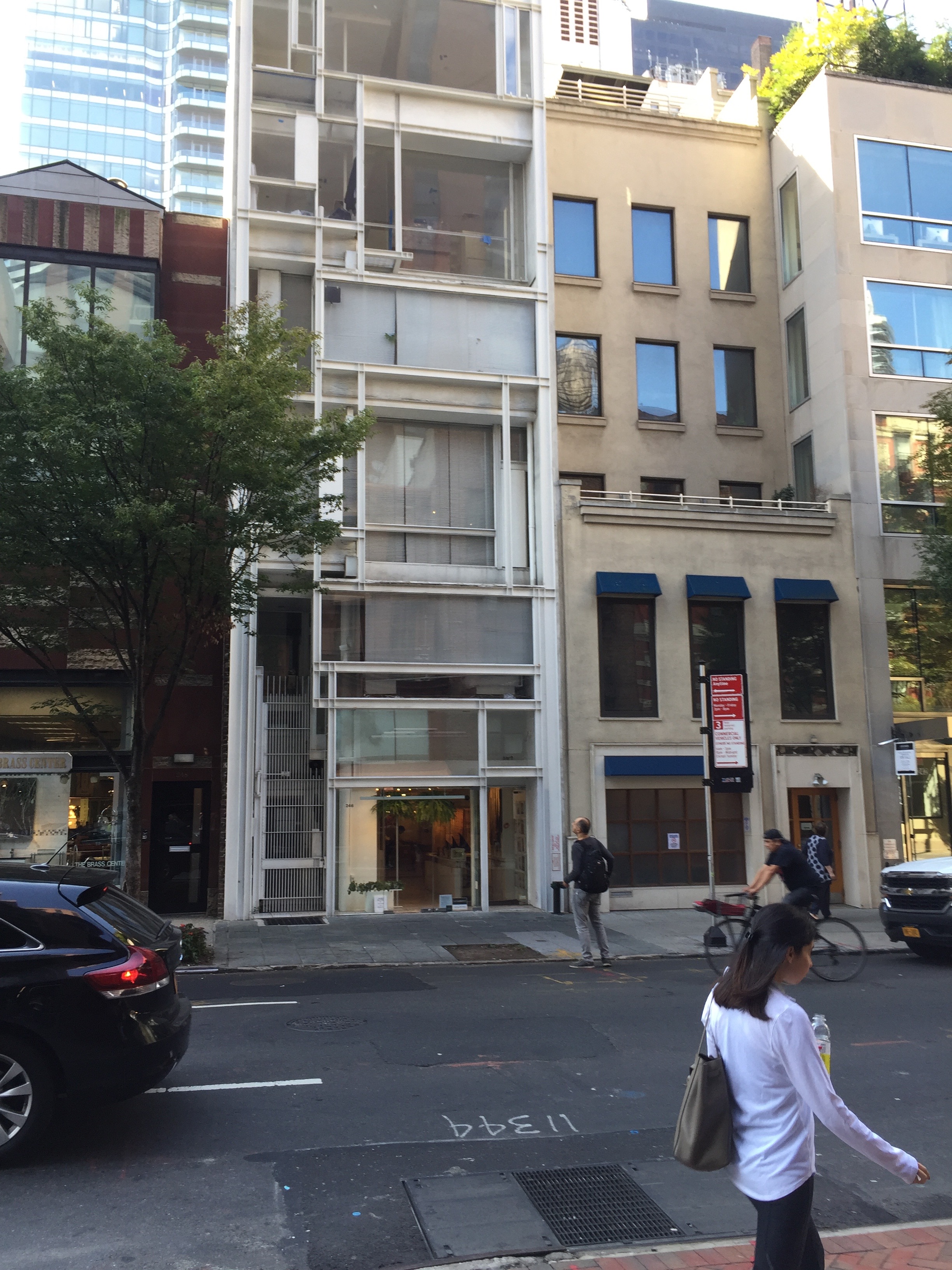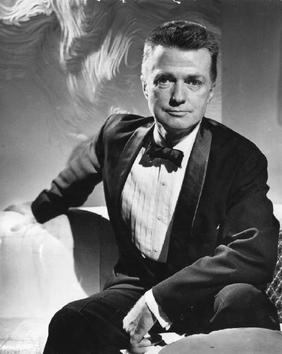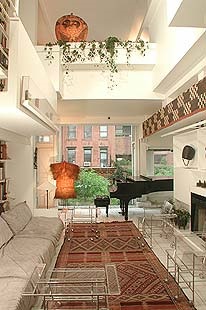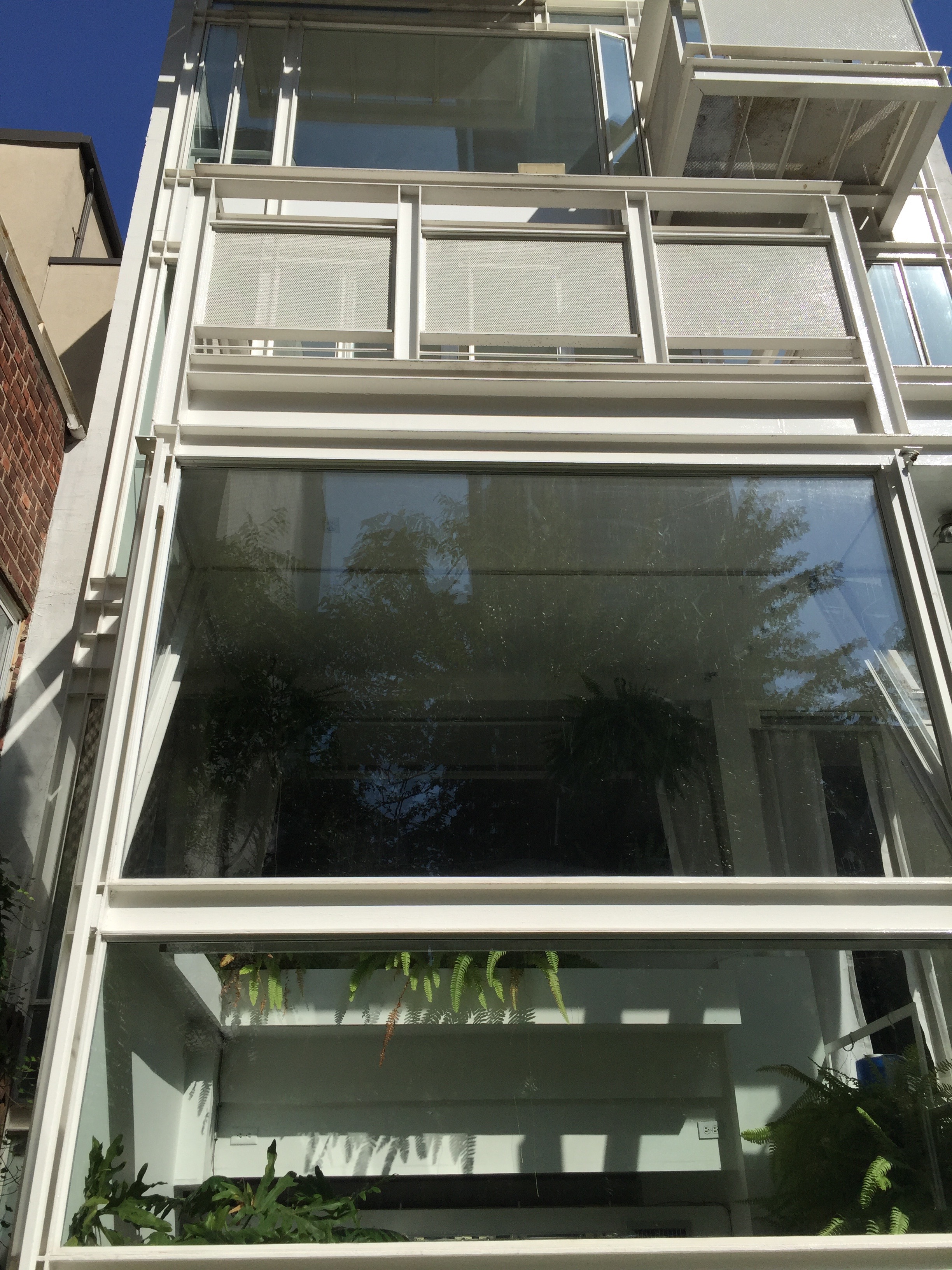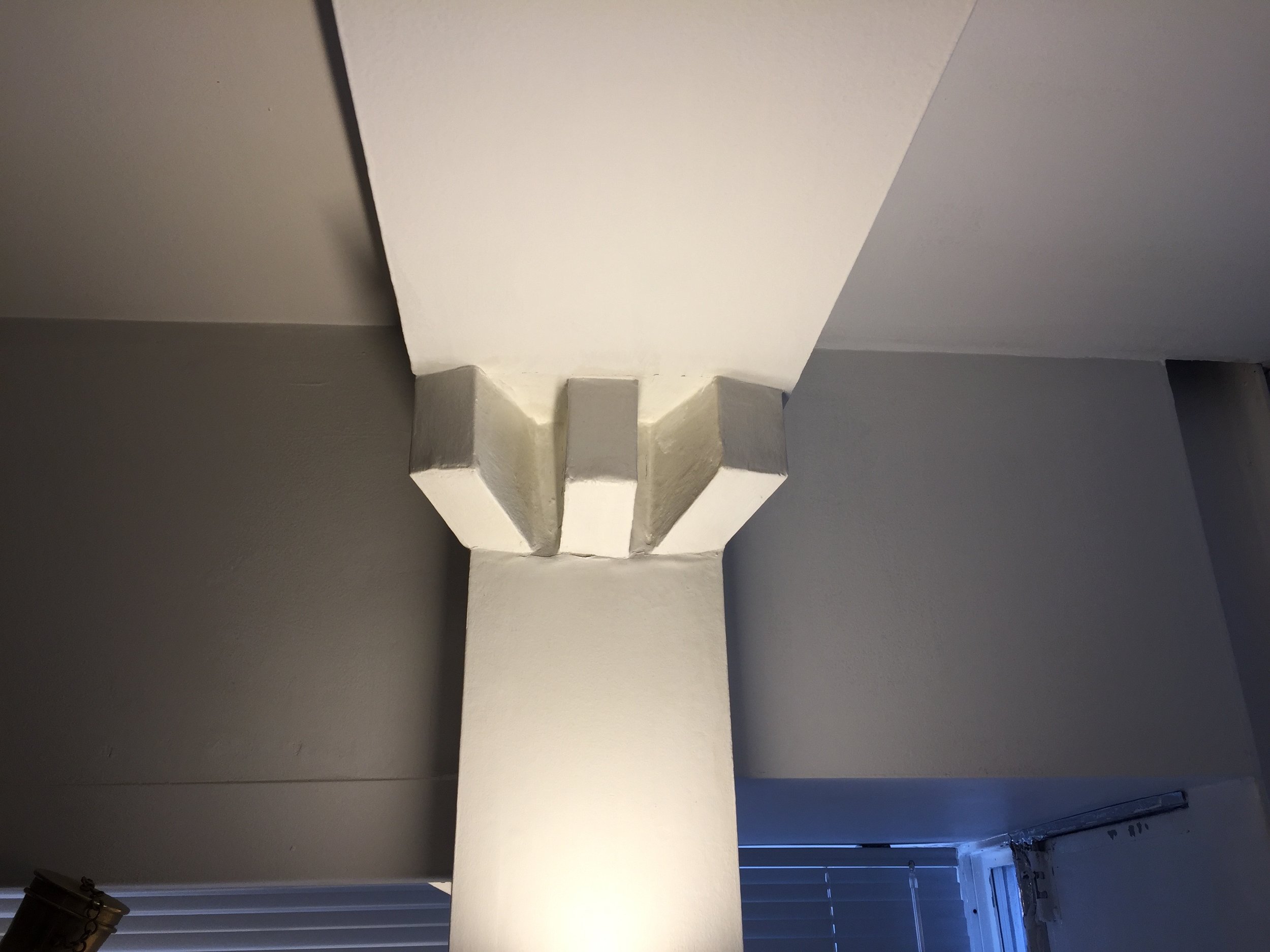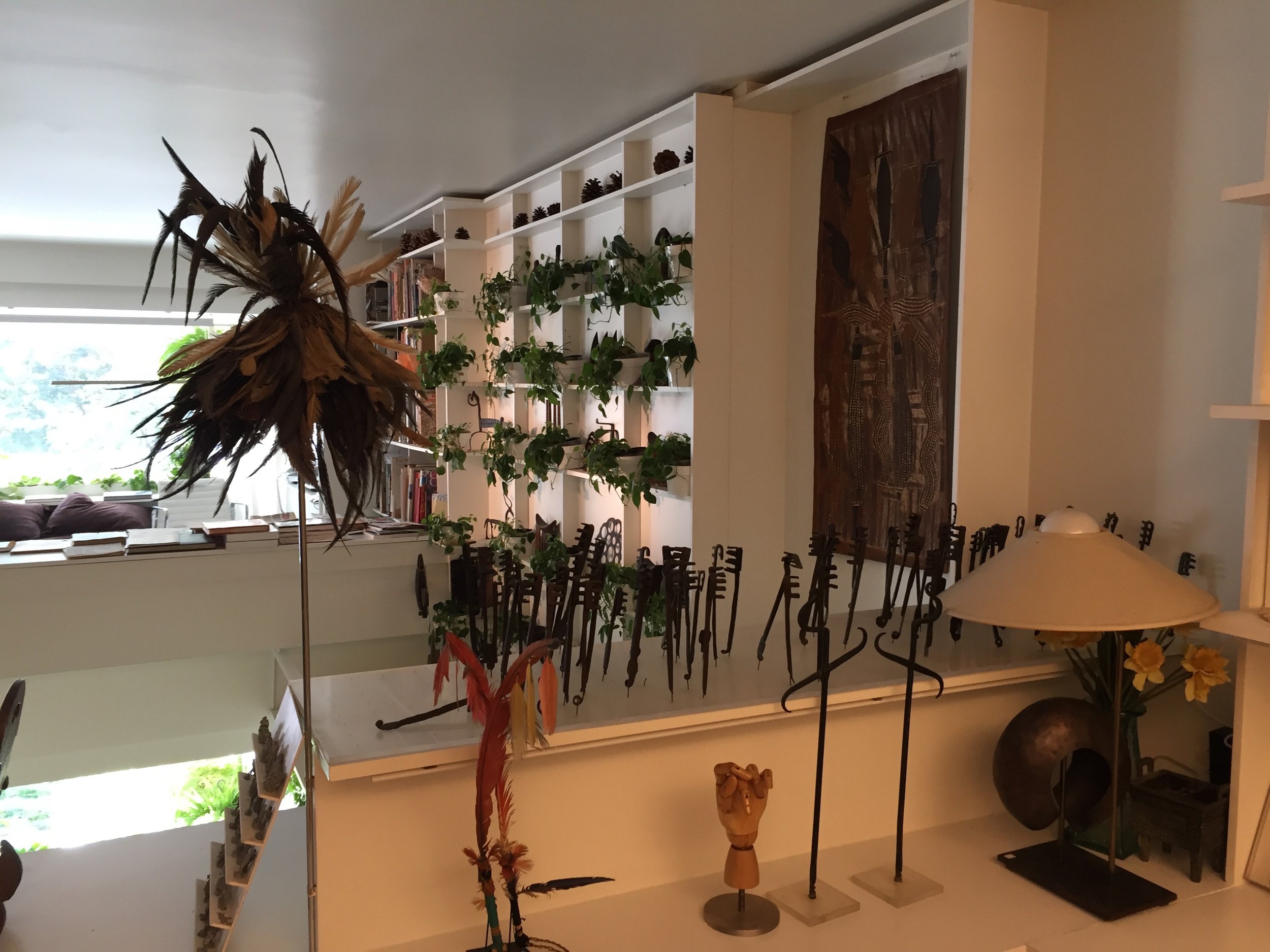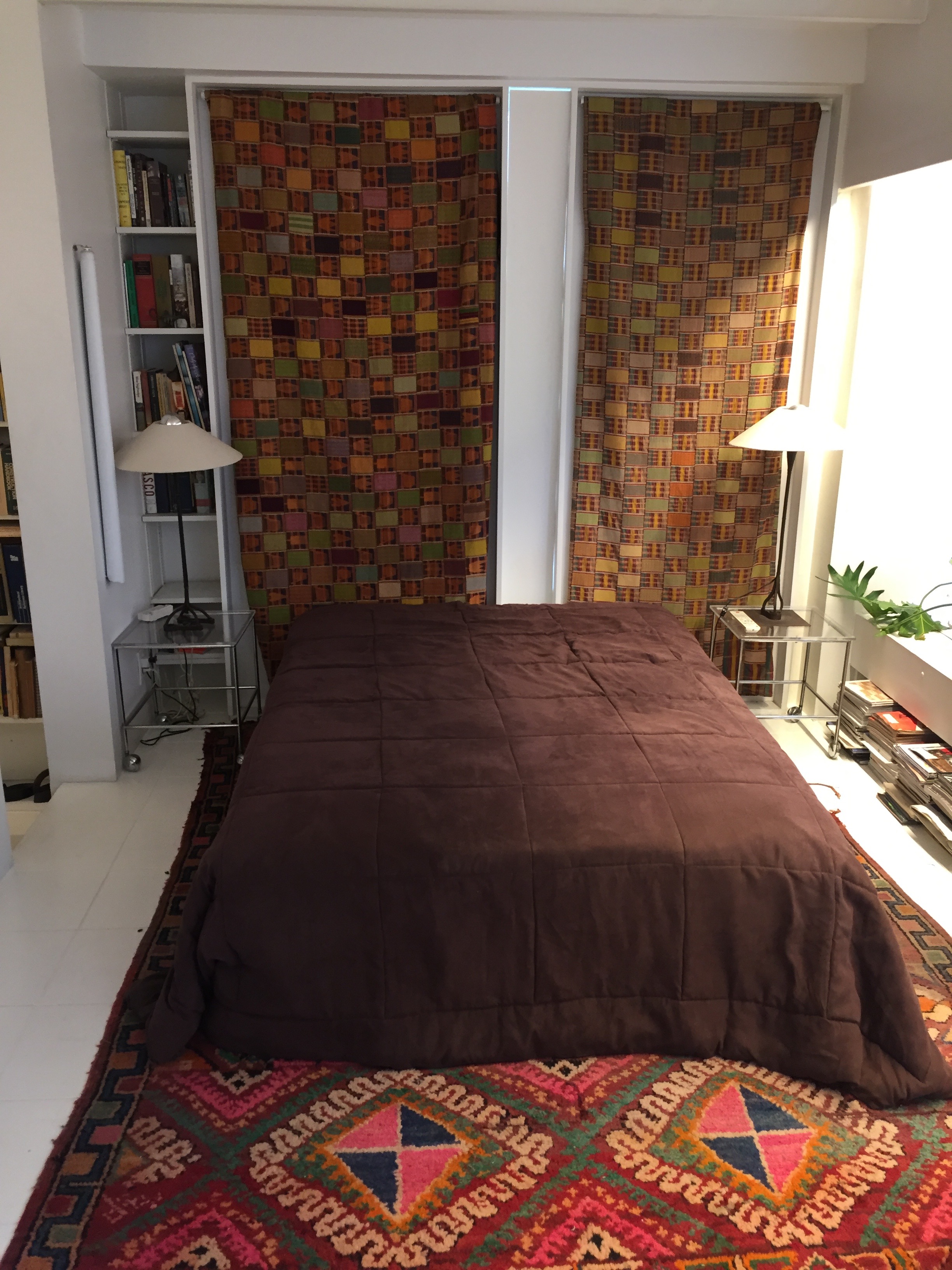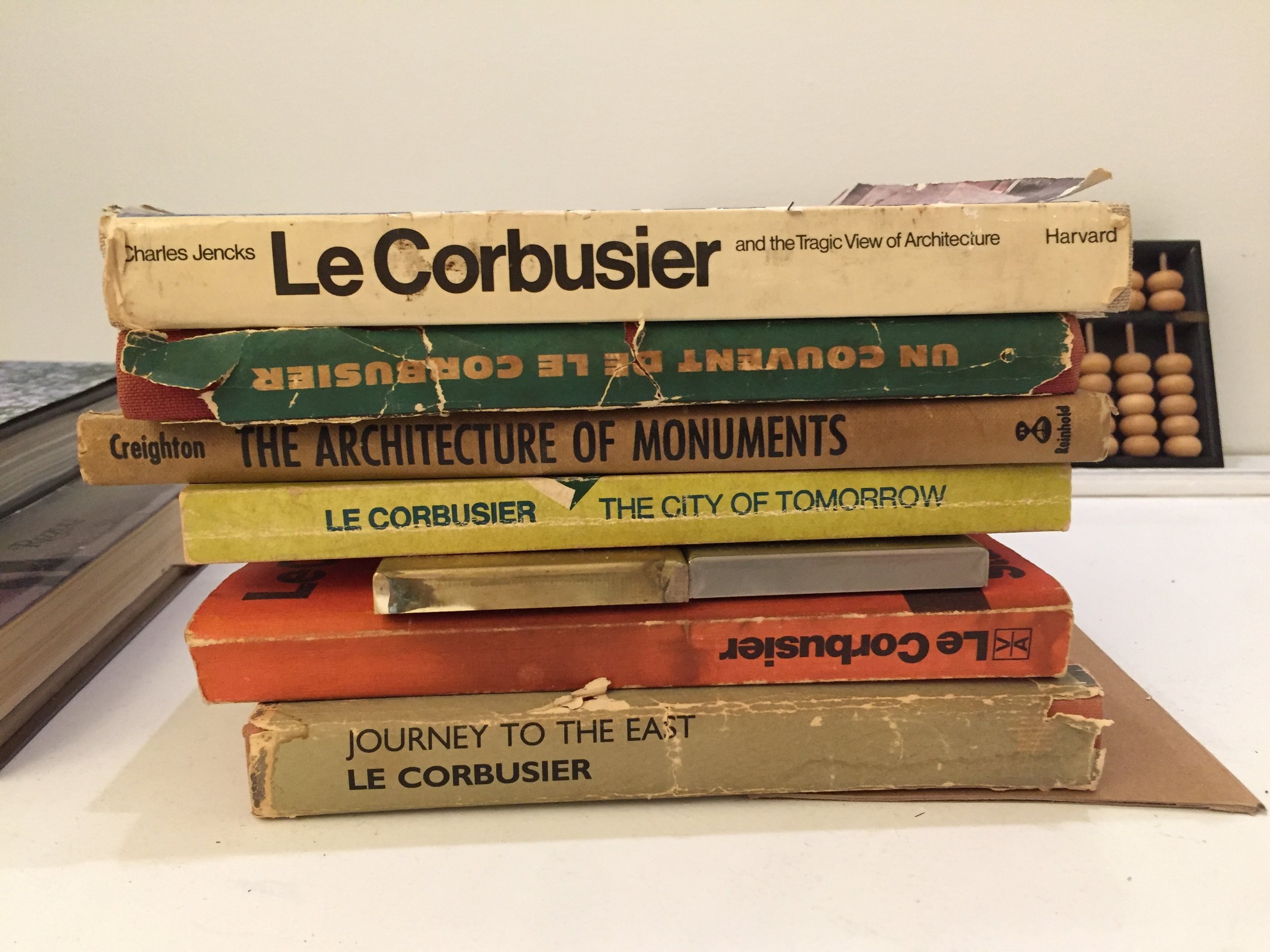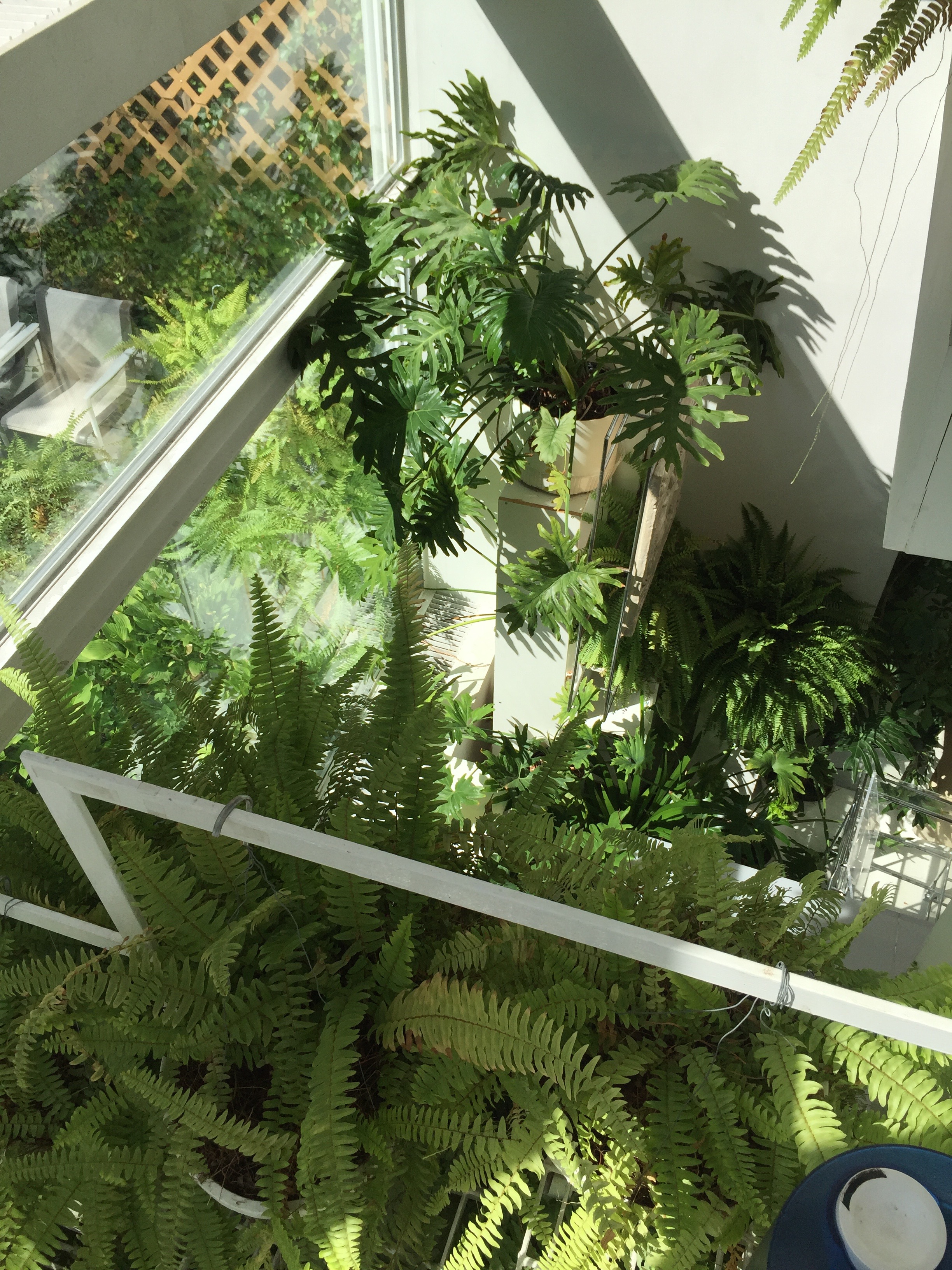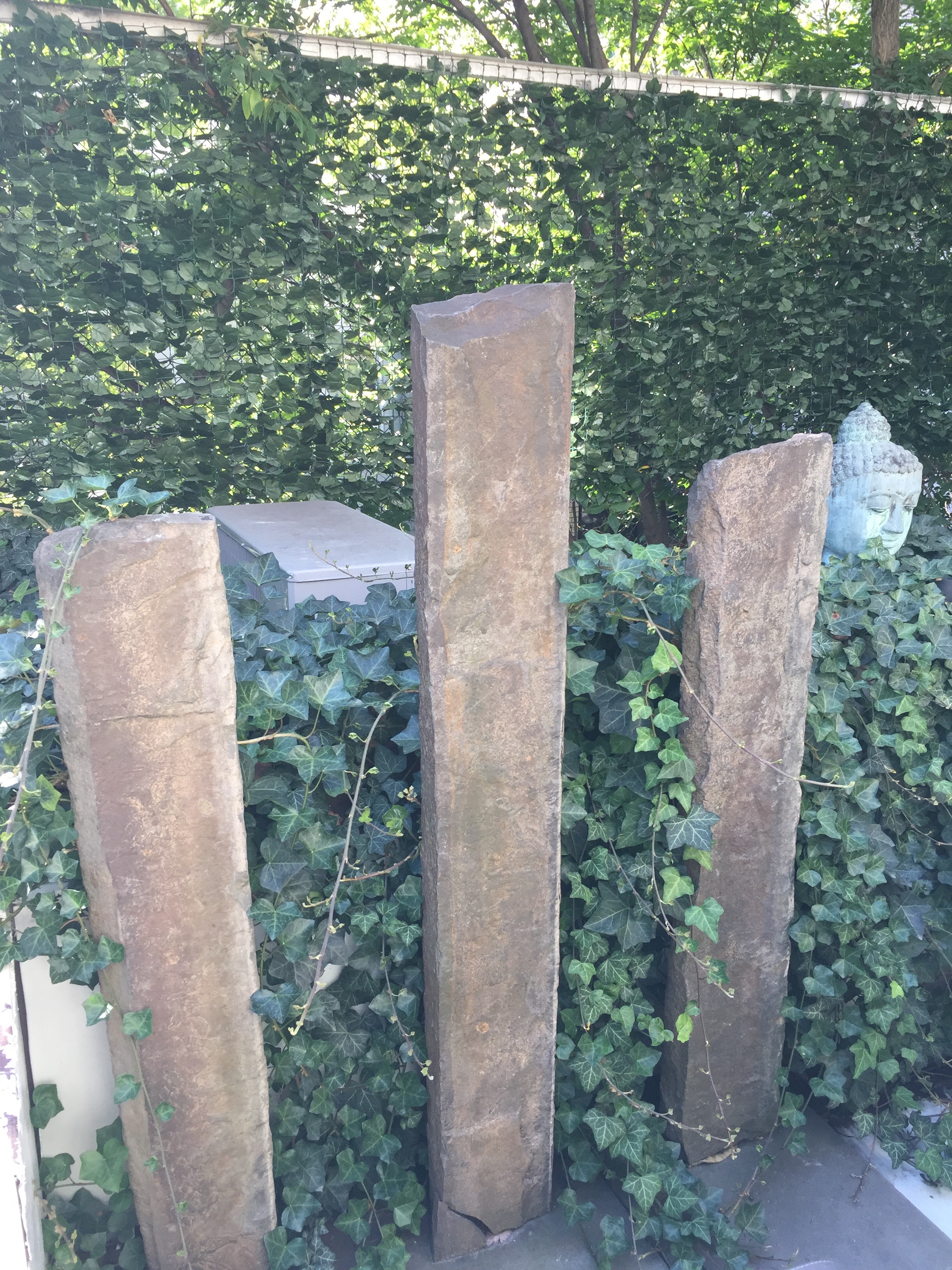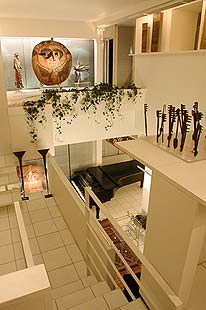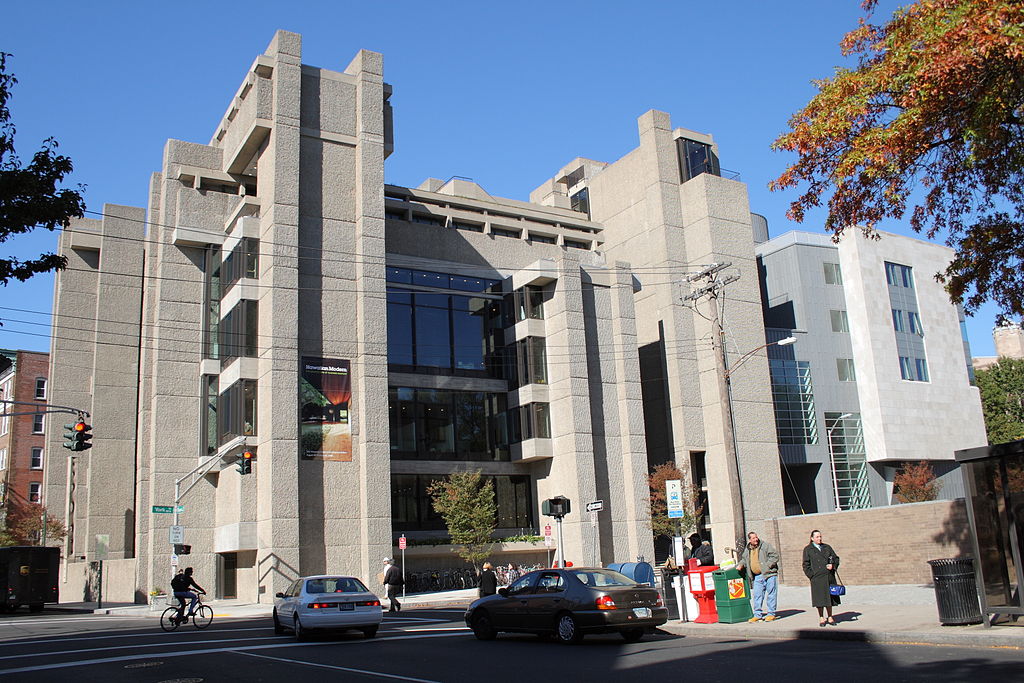When I first came upon Paul Rudolph’s Modulightor building as part of the wonderful series of events that comprises Archtober , I was kicking myself. I’ve lived in NY for a good part of my life and must have walked by the building countless times.
There’s no way you can miss this modernist structure at 246 East 58th Street. Unlike Rudolph’s more brutalist works (Yale Architecture School), once threatened themselves, the Modulightor builiding which houses a ground floor showroom for the company he began with his business partner Ernst Wagner (who still lives in the duplex) is a light, airy, white structure that has not come under the withering, revisionist glance of the architecture fashionistas who readily take up one mode for another.
Wagner, now one of his most ardent preservationists, says this house will not be eligible for landmark status for a few more years. Fie on the Landmark’s Preservation Commission if this interior/exterior is not maintained. Wegner is refurbishing the top two floors for Rudolph’s centenary a year from now and if you want a thrilling place to give a cocktail party or private dinner you can do that. (Rudolph apparently gave great parties.)
The house is not wide (20 feet) but its white backgrounds, kilims, African sculptures, fenestrated Picasso knock-off, see through kitchen shelving, indoor outdoor greenery, thin, elegant lighting, multi level flooring and Plexiglas chairs all make for a light-filled space which does not feel confined in any way. Because it is lived in, it has the added charm of feeling lively.
Alas, a California buyer (who is this?!!) bought Rudolph’s Beekman Place residence—purportedly even more spectacular-- and after promising to preserve it, gutted it. All that’s left are some marvelous photographs. And behind Rudolph's diminutive Modulightor masterpiece you can see the hulking Macklowe tower as a symbol of an entirely different aesthetic.
Having recently read Wendy Lessser’s wonderful biography of Louis Kahn, I have my antennae up for the men behind these architectural wonders. Rudolph had his travails with the Yale Architecture School (now brilliantly refurbished and sparkling) where he had been dean, and had some rough years after his brutalist style went entirely out of fashion but now has come roaring back into the public eye as the true innovator he was.
A number of his Florida residences and projects near Sarasota are open to the public from time to time and it’s easy to get to Yale (New Haven). I once was lucky enough to see another private commission from the 70’s which though much larger still had an elegance within its heavier modernist structure that shone through. Rudolph gave all of his archives to the Library of Congress but Modulightor is a great place to begin a Rudolph expedition.
